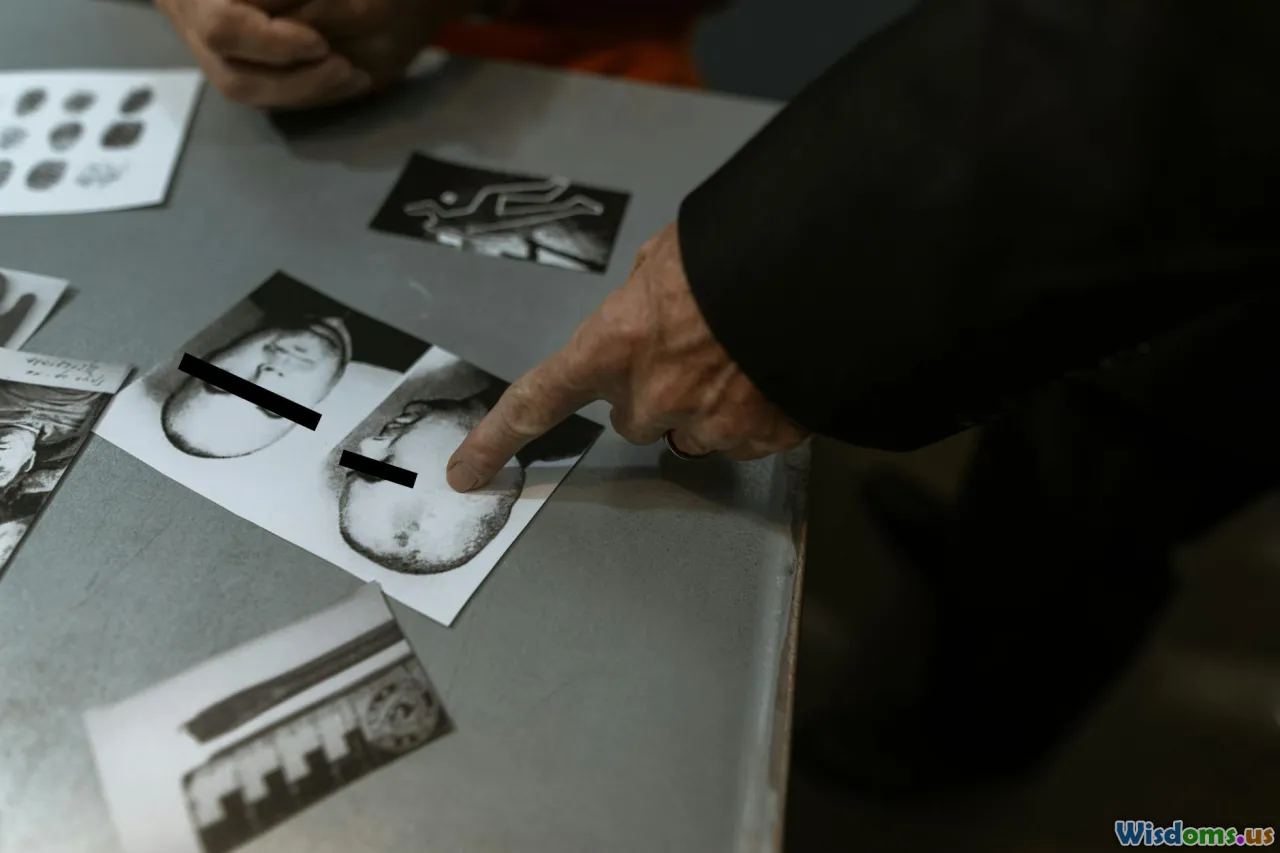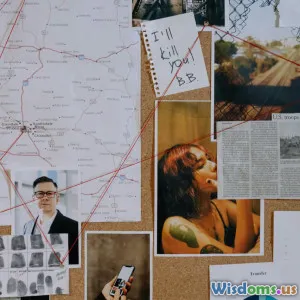
Building Criminal Profiles
8 min read Explore the art and science behind building criminal profiles to solve crimes effectively. (0 Reviews)
Building Criminal Profiles: Unraveling the Mysteries of Criminal Minds
Crime investigation is part art, part science, and among the most intriguing tools used in this field is criminal profiling. But how exactly does one sift through facts and behaviors to sketch the psychological and behavioral blueprint of a criminal? Building criminal profiles is a fascinating and vital process that aids law enforcement agencies in understanding, predicting, and capturing offenders. This article offers an insightful and comprehensive guide into how criminal profiles are built, why they matter, and what examples highlight their value.
Introduction: The Human Puzzle in Crime Investigation
Imagine an investigator grasping the nuances behind a cryptic set of evidence — footprints, choice of victim, crime location — and then picturing the personality lurking behind those elements. This is the essence of criminal profiling: decoding puzzles that physical evidence alone cannot solve. It grips our collective imagination, reflected in popular culture from Mindhunter to Criminal Minds. But beyond the dramatic flair lies a complex interplay of psychology, forensic science, and investigative experience aimed at lifting the veil of anonymity masking offenders.
Profiling doesn’t guarantee a full portrait but rather offers a hypothesis that narrows investigative direction and focuses resources effectively. It blends hard data, behavior science, and sometimes, seasoned intuition.
What is Criminal Profiling?
Criminal profiling, also known as offender profiling or behavioral profiling, refers to the investigative tool used to infer attributes about a criminal based on the crimes committed. The profile provides likely characteristics such as age range, personality traits, habits, and possible motivations.
According to the FBI’s Behavioral Science Unit, the goal is to create a psychological, behavioral, and demographic sketch that connects unsolved cases or informs ongoing investigations.
Types of Criminal Profiles
- Deductive Profiling: Relies strictly on evidence derived from a specific crime scene,
- Inductive Profiling: Uses statistical data from previous offenders who committed similar crimes to make generalized predictions,
- Geographical Profiling: Analyzes locations related to the crime to determine the offender’s likely base or routine areas.
Each type complements investigative strategies by revealing different facets of the offender’s persona and habits.
The Process of Building a Criminal Profile
Building a profile is methodical and multifaceted. Here’s a breakdown of the essential steps:
1. Crime Scene Examination
The first step is to scrutinize the crime scene and any forensic evidence gathered. An experienced profiler looks for signatures – unique aspects that fulfill a psychological or emotional need of the criminal, separate from the motive, for instance, specific ways a victim is harmed.
2. Victimology
Understanding the victim’s lifestyle, habits, relationships, and vulnerabilities can shed light on why they were targeted. This step distinguishes random from specifically selected victims.
3. Crime Reconstruction
Detailing the sequence and nature of actions during the crime helps to understand the offender’s level of planning, impulsivity, and knowledge.
4. Behavioral Analysis
Psychological theories come into play here, assessing traits like control, aggression, and risk levels evident in the crime.
5. Creating the Profile
Profilers synthesize all information into a structured profile that may include predictions on the age, gender, employment status, criminal history, possible geographic residence, and mental state of the offender.
Real-World Examples Showcasing Profiling Power
The Atlanta Child Murders (1979-1981)
Profile-building proved crucial in solving one of America’s most frightening serial killing sprees. Investigators used profiling to distill the offender’s psychological characteristics which eventually pointed towards Wayne Williams, whose pattern and behavior fit the constructed profile, leading to his arrest.
The BTK Killer (Dennis Rader)
Despite several decades passing without capture, Rader’s profile—combining detailed crime scene analysis with behavior patterns—helped law enforcement narrow down suspects profoundly. The emotional signature left at victim sites, like personal taunts and control, aligned with a specific personality type, aiding investigators in finally apprehending Rader.
These cases underscore how sophisticated profiling, combined with good detective work, can unlock the secrets behind perplexing crimes.
The Science Behind Criminal Profiling
Profiling draws heavily from:
- Psychology: Understanding mental health disorders, cognitive patterns, and personality profiles.
- Forensic Science: Using physical evidence and crime scene data.
- Sociology and Criminology: Understanding societal influences on criminal behavior.
Academic research validates its approaches. For example, a study by the Journal of Investigative Psychology and Offender Profiling (2017) highlighted that profiling improves suspect prioritization accuracy up to 70% in complex investigations.
However, the practice isn't without critics; some argue it risks pigeonholing suspects and can sometimes be anecdotal rather than empirical. Modern profiling has increasingly adapted to integrate data analytics and AI for greater accuracy.
Ethical Considerations and Limitations
Profilers face ethical dilemmas: The risk of bias influencing profiles, privacy concerns, and potential wrongful suspicion. It remains crucial that profiles be used as guides rather than conclusive evidence.
Limitations include:
- Complexity of human behavior that defies neat categorization.
- Overreliance on profiling may lead to tunnel vision.
- Profiles must evolve alongside new research and technology advances.
Transparency and continual professional training are essential to preserve profiling as a helpful investigative tool.
Conclusion: The Ever-Evolving Art and Science of Building Criminal Profiles
Building criminal profiles bridges the psychological dimensions with empirical evidence to aid crime investigations. While it is not infallible, the blending of behavioral science with forensic analysis has transformed how law enforcement approaches the unknown. Real cases demonstrate that profiling, when used judiciously, expedites solving crimes and apprehending offenders.
For anyone passionate about criminology, justice, or psychology, understanding profiling is a gateway into the intricate dance between human behavior and the law. As technology and research evolve, so too will the tools detectives wield, bringing us closer to unraveling the enigma of criminal minds in an increasingly safer world.
Whether you’re an aspiring criminologist or a curious reader drawn by the complexity of criminal behavior, appreciating the discipline behind building profiles enriches our grasp of human nature’s darker facets and the justice pursued against them.
Rate the Post
User Reviews
Other posts in Forensic Science
Popular Posts


















